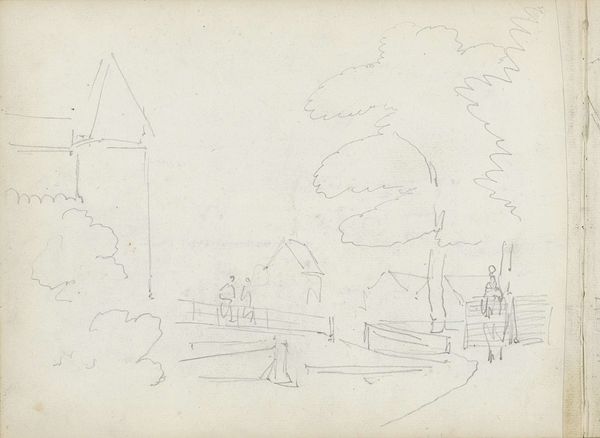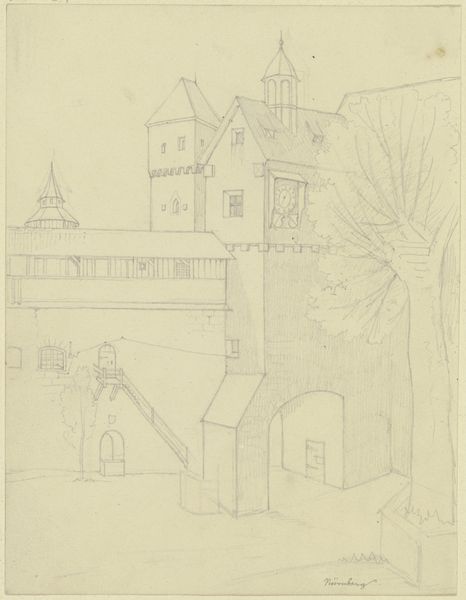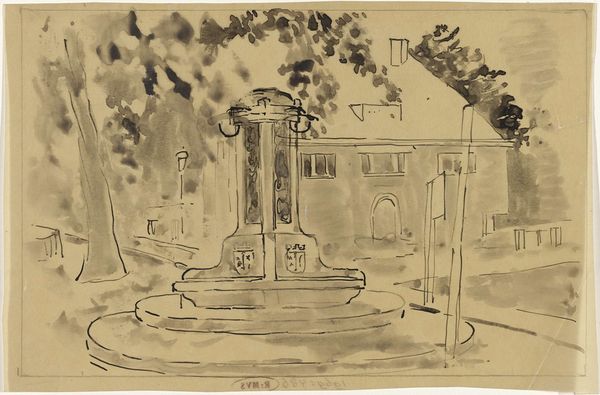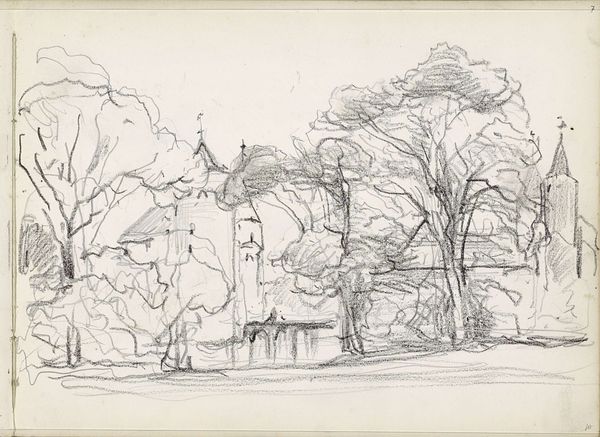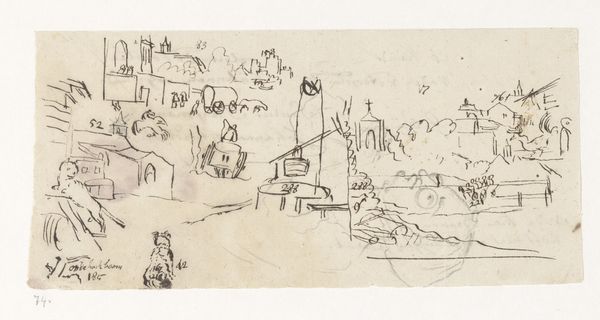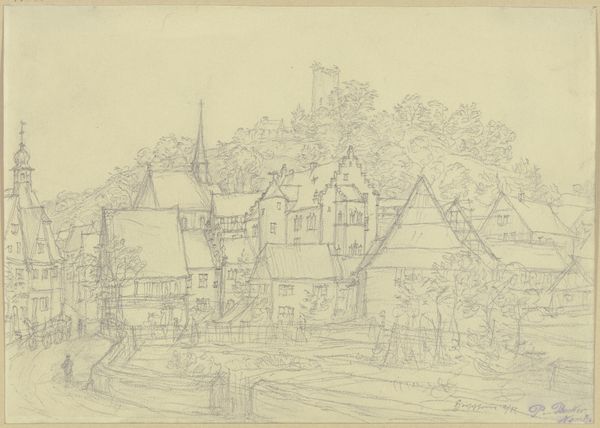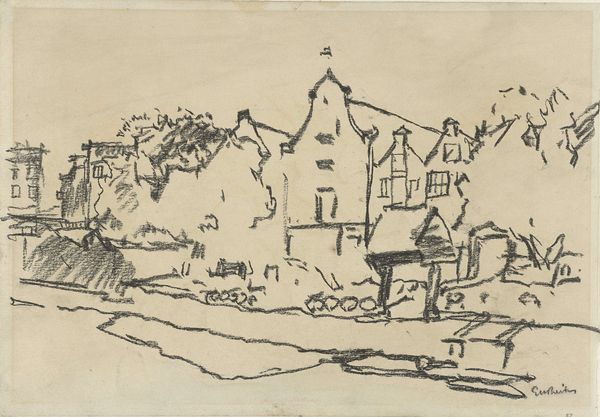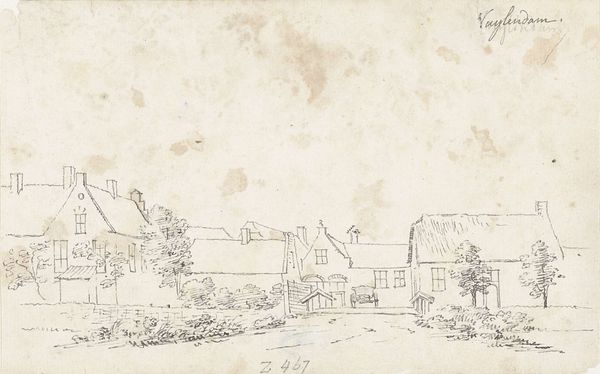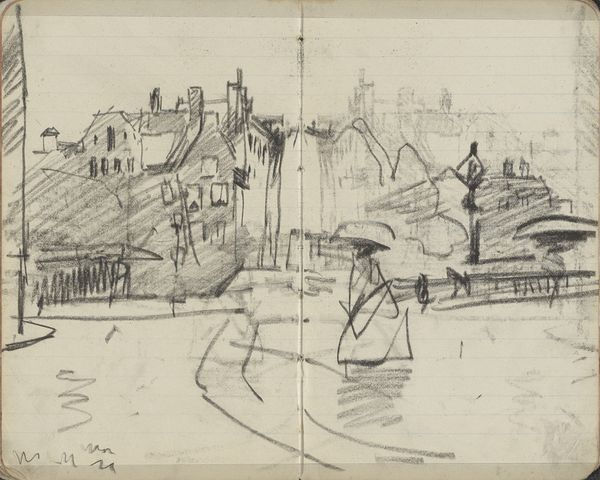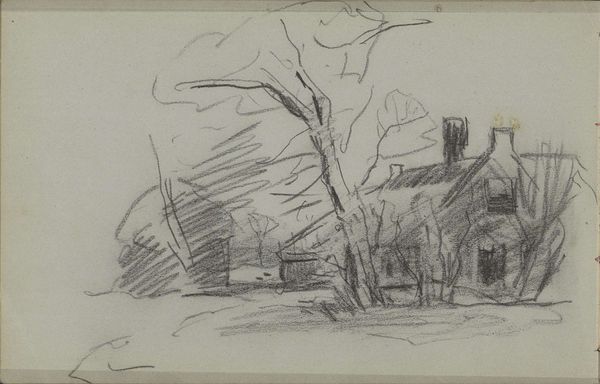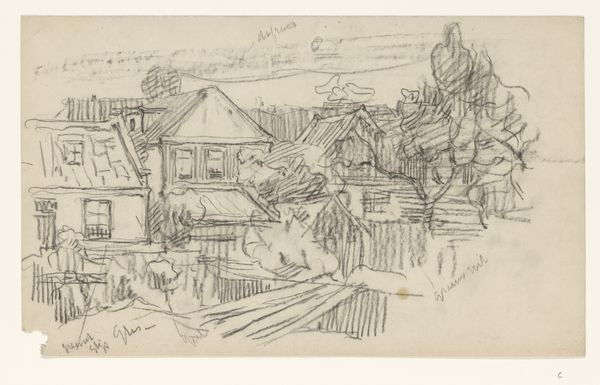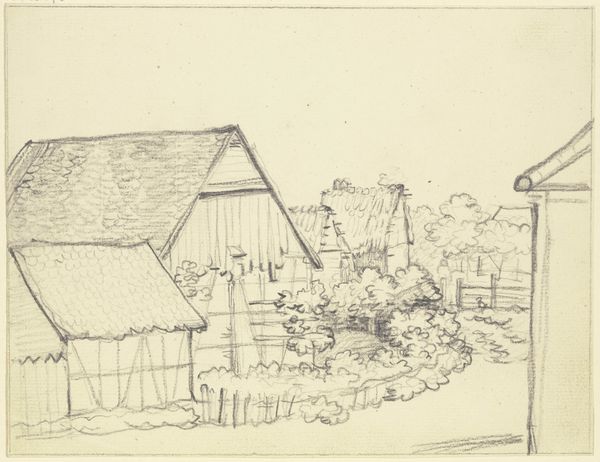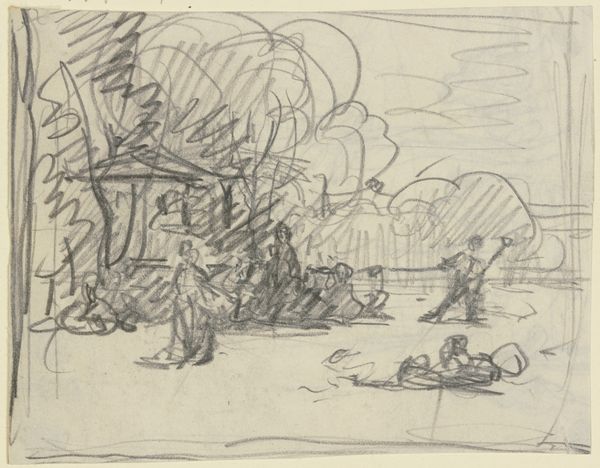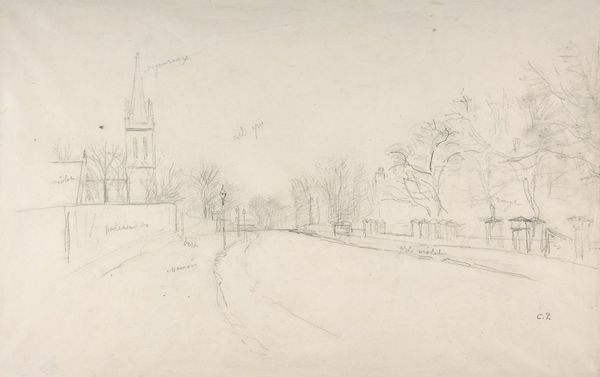
drawing
#
drawing
#
pen sketch
#
german-expressionism
#
line
#
cityscape
Copyright: Public Domain: Artvee
Curator: Well, here we have Ernst Ludwig Kirchner's "Das Boskett in Dresden," created in 1911. It's a pen sketch, full of energy and restless lines. What springs to mind when you look at it? Editor: It feels...unfinished. But deliberately so, right? Like a fleeting impression captured with nervous excitement. It makes me think of a city waking up, people milling about with purpose, but also anonymity. Curator: Absolutely! The hasty lines capture the burgeoning city life in Dresden. Notice the contrast between the rigid architectural forms and the natural elements. It speaks to the Expressionist aim to capture an emotional reality. Editor: I find myself considering who this space is really for. A place of leisure in 1911 was almost certainly defined by social class and gender. Were these gardens equally accessible to all segments of Dresden's population? What labor went into maintaining this "natural" scene? Curator: Good point. Though Kirchner himself came from a privileged background, his Expressionist tendencies made him aware of social issues. These kinds of spaces in urban life often act as a kind of stage for performing social rituals. We can see that in the way Kirchner highlights those promenading figures. Editor: Exactly. Their anonymity makes them almost symbolic, hinting at the masses. And considering the rise of industrialization and urbanization in early 20th-century Germany, the garden is this contained, cultivated, possibly false nature that acts as a haven, a brief escape from the realities outside its manicured perimeter. Curator: Right! The fountain becomes a centerpiece, suggesting a fabricated version of natural spring. It creates this feeling of being slightly artificial and hyper-controlled, maybe even slightly unsettling. Editor: So, beyond the aesthetic charm, this little drawing is packed with socio-political implications, right? It's a potent commentary on early modern life. The quick lines are suggestive of impermanence and this modern pace, it is all a bit accelerated, no? Curator: I agree entirely. Kirchner is hinting at an awareness of these bigger social issues, using the language of his own Expressionist feeling. Editor: Seeing Kirchner’s work through a socio-political lens enriches it immensely. Thank you for showing this drawing today. Curator: Indeed! Looking at it from my side, all these elements are intertwined—artistic feeling with the political.
Comments
No comments
Be the first to comment and join the conversation on the ultimate creative platform.
